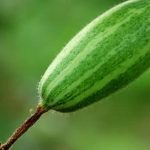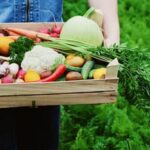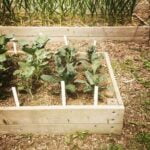Are you looking to start a vegetable garden in the vibrant city of Austin, TX? Look no further. Vegetable gardens in Austin, TX offer a host of benefits for both the environment and the gardener.
With the right planning and care, you can enjoy a bountiful harvest of fresh, nutritious produce right in your own backyard. From the best vegetables to grow in Austin’s climate to community resources and support for local gardeners, this article will guide you through every step of creating and maintaining a successful vegetable garden in Austin.
The warm and sunny climate of Austin, TX provides an ideal environment for growing a wide variety of vegetables. Whether you’re a seasoned gardener or new to the practice, there are countless benefits to be reaped from starting your own vegetable garden.
Not only does it provide you with access to fresh, organic produce, but it also promotes sustainability and reduces your carbon footprint. In this section, we will explore the many advantages of vegetable gardening in Austin and how it can positively impact both your health and the local community.
In addition to being able to enjoy fresh vegetables straight from your garden, growing your own produce also allows you to control what goes into your food. With so many pesticides and chemicals used in commercial farming, having your own vegetable garden ensures that you know exactly where your food comes from and what is used to grow it.
Overall, vegetable gardens offer numerous physical and mental health benefits while also enabling you to reduce your environmental impact – something that is particularly important in an eco-conscious city like Austin.
Best Vegetables to Grow in Austin’s Climate
When it comes to vegetable gardening in Austin, TX, it’s important to choose the right vegetables that will thrive in the city’s unique climate. With hot summers and mild winters, selecting the best vegetables for your Austin vegetable garden is crucial for a successful harvest. Here are some of the best vegetables to grow in Austin’s climate:
- Tomatoes – Tomatoes are well-suited for Austin’s warm climate and can be grown throughout the year with proper care.
- Peppers – Both sweet and hot peppers thrive in the heat of Austin and can be a productive addition to your vegetable garden.
- Squash – Varieties such as zucchini and yellow squash are ideal for Austin’s long growing season and warm temperatures.
- Green Beans – These easy-to-grow vegetables do well in Austin’s climate and provide a bountiful harvest.
In addition to these vegetables, other suitable options for an Austin vegetable garden include cucumbers, okra, eggplant, and various herbs such as basil, oregano, and thyme. It’s important to select varieties that are heat-tolerant and well-suited to the growing conditions in Austin.
When planning your vegetable garden in Austin, consider the specific needs of each crop and choose varieties that are known to perform well in Central Texas. By selecting the best vegetables for Austin’s climate, you’ll set yourself up for a successful and rewarding gardening experience. With proper care and attention, your vegetable garden in Austin can yield a productive harvest of fresh, homegrown produce.
Planning and Designing Your Vegetable Garden in Austin
When planning and designing a vegetable garden in Austin, it’s important to take into consideration the unique climate and soil conditions of the area. With the hot and humid summers, mild winters, and occasional extreme weather events, Austin presents both opportunities and challenges for vegetable gardeners. However, with some thoughtful planning and careful design, you can create a thriving vegetable garden that produces an abundance of fresh produce.
Location and Layout
When planning your vegetable garden in Austin, consider the location and layout of your garden. Choose a spot that receives at least 6-8 hours of direct sunlight each day, as most vegetables thrive in full sun. Additionally, consider the proximity to water sources for irrigation purposes. The layout of your garden should also take into account any existing landscaping or structures that may impact sun exposure and airflow.
Vegetable Selection
Next, when designing your vegetable garden in Austin, carefully select which vegetables to grow based on the specific climate and growing conditions. Some vegetables that do well in Austin’s climate include tomatoes, peppers, squash, okra, cucumbers, and various herbs. Consider planting native or heat-tolerant varieties to increase success rates.
Companion Planting
In addition to choosing the right vegetables for your Austin garden, consider incorporating companion planting techniques into your design. Companion planting involves growing certain plant species together to improve pest control, maximize space utilization, reduce weeds, and enhance pollination. For example, planting marigolds alongside tomatoes can help repel pests while attracting beneficial insects.
By taking these factors into account when planning and designing your vegetable gardens Austin TX residents can increase their chances of success in growing healthy and bountiful produce throughout the year.
Choosing the Right Soil for Your Austin Vegetable Garden
When it comes to starting a vegetable garden in Austin, TX, one of the most important factors to consider is the type of soil you’ll be using. The right soil can make all the difference in the success of your garden. Fortunately, Austin’s soil is generally well-suited for gardening, but there are still some important considerations to keep in mind.
Understanding Austin’s Soil
Austin’s soil is primarily composed of clay and limestone, which can present some challenges for vegetable gardening. While these soil types offer good drainage and fertility, they can also be quite alkaline and compacted. It’s essential to test your soil before planting to determine its pH levels and overall composition.
Amending Your Soil
To create the ideal growing environment for your vegetables, you may need to amend your soil with organic matter such as compost or well-rotted manure. This will improve both the texture and fertility of the soil, making it more suitable for growing a wide range of vegetables. Additionally, adding organic matter can help increase the water-holding capacity of the soil, which is especially important during hot and dry periods in Austin.
Maintaining Soil Health
Once you’ve prepared your vegetable garden soil, it’s crucial to continue maintaining its health throughout the growing season. Mulching around your plants with materials like straw or wood chips can help retain moisture and regulate soil temperature. Additionally, practicing crop rotation each year can prevent nutrient depletion and reduce the risk of pests and diseases. By taking these steps, you can ensure that your Austin vegetable garden thrives in its unique soil conditions.
Watering and Irrigation Tips for Austin Vegetable Gardens
When it comes to vegetable gardens, proper watering is crucial for the health and success of your plants. In the hot and often dry climate of Austin, Texas, it’s especially important to pay attention to the watering needs of your vegetable garden. One of the key tips for watering your Austin vegetable garden is to water deeply and infrequently. This encourages deep root growth and makes the plants more resilient during dry periods.
Another essential tip for watering your vegetable garden in Austin is to water in the morning or evening to reduce evaporation and make sure that as much water as possible reaches the roots of your plants. Using a drip irrigation system or a soaker hose can also be an efficient way to deliver water directly to the base of your plants without wasting water through evaporation.
It’s also important to consider harvesting rainwater in Austin, especially during periods when rainfall is scarce. Setting up a rain barrel or other rainwater collection system can provide you with a free source of water for your vegetable garden. This is not only environmentally friendly but can also save you money on your water bill.
| Benefit | Data |
|---|---|
| Watering Needs | Deep and infrequent watering |
| Watering Time | Morning or evening to reduce evaporation |
| Rainwater Harvesting | Setting up a rain barrel or other collection system |
Dealing With Pests and Diseases in Austin’s Vegetable Gardens
When it comes to maintaining a successful vegetable garden in Austin, Texas, dealing with pests and diseases is an inevitable part of the process. However, there are several strategies that can help prevent and manage these issues to ensure a bountiful harvest.
One effective way to protect your vegetable garden from pests and diseases is by practicing crop rotation. This involves planting different vegetables in different areas of the garden each year to disrupt the life cycle of pests and reduce the build-up of soil-borne diseases. Additionally, interplanting certain crops can help repel pests or attract beneficial insects that will help control pest populations.
Another important step in pest and disease management is regular inspection of your plants. By closely monitoring your vegetable garden, you can quickly identify any signs of pest infestations or disease outbreaks. Early detection allows for prompt action, which can prevent the spread of issues throughout the entire garden.
Furthermore, maintaining healthy soil through proper fertilization and organic matter additions can also help strengthen plants’ natural defenses against pests and diseases. Implementing cultural practices such as proper spacing between plants and good air circulation can also reduce the risk of fungal diseases. In addition to this, using natural pest control methods like companion planting or introducing beneficial insects to the garden can also be an effective tool in managing pests without resorting to chemical solutions.
- Crop rotation
- Regular plant inspection
- Maintaining healthy soil
- Natural pest control methods
Harvesting and Preserving Your Austin-Grown Produce
Once your vegetable garden in Austin, TX has flourished and produced a bountiful harvest, it’s important to know how to properly harvest and preserve your produce. Harvesting at the right time is key to getting the best flavor and nutritional value from your vegetables. For example, tomatoes should be picked when they are fully colored but still firm, while leafy greens such as lettuce and spinach are best harvested when they are young and tender.
When it comes to preserving your Austin-grown produce, there are several methods you can use to enjoy your harvest for months to come. Canning is a popular option for preserving vegetables such as tomatoes, cucumbers, and green beans.
Freezing is another great way to preserve the peak freshness of your vegetables, especially for items like peas, corn, and broccoli. Additionally, many gardeners in Austin enjoy pickling their excess produce as a way to extend its shelf life and add delicious flavor.
In addition to traditional preservation methods, you can also consider drying or dehydrating certain vegetables such as peppers and herbs. This method not only preserves the vegetables but also concentrates their flavors, making them perfect for adding a burst of taste to your favorite dishes throughout the year.
| Vegetable | Harvest Time |
|---|---|
| Tomatoes | Fully colored but still firm |
| Lettuce | Youung And Tender |
| Cucumbers |
Community Resources and Support for Vegetable Gardeners in Austin, TX
In conclusion, vegetable gardening in Austin, TX offers a multitude of benefits for both individuals and the community as a whole. From promoting healthy eating to reducing environmental impact, there are numerous reasons to start your own vegetable garden in this thriving city. With the right planning and design, as well as access to community resources and support, anyone can enjoy a successful harvest of fresh produce right in their own backyard.
When it comes to choosing the best vegetables to grow in Austin’s climate, residents have a wide variety of options that thrive in the hot and sometimes challenging weather conditions. From tomatoes and peppers to squash and okra, there are plenty of delicious choices for both novice and experienced gardeners.
Additionally, with the support of local community resources such as gardening clubs, farmer’s markets, and educational workshops, individuals can gain valuable knowledge and assistance in all aspects of vegetable gardening. Whether it’s learning about organic pest control methods or discovering new recipes for preserving your harvest, Austin offers a wealth of resources for vegetable gardeners to take advantage of.
Overall, with the right tools and support, anyone can enjoy the bountiful rewards of growing their own produce in their very own vegetable gardens Austin TX.
Frequently Asked Questions
Can You Grow Vegetables in Austin?
Yes, you can definitely grow vegetables in Austin, Texas. The city’s climate is conducive to growing a variety of vegetables such as tomatoes, peppers, squash, and green beans. With the right care and attention, a thriving vegetable garden is achievable in Austin.
Can You Have a Vegetable Garden Year Round in Texas?
Having a vegetable garden year-round in Texas is possible with proper planning and knowledge of what grows best in each season. While summer may be challenging due to the heat, cool-season vegetables like lettuce, spinach, and carrots can be grown during the winter months.
What Month Do You Plant Vegetables in Texas?
In Texas, the best month to plant vegetables largely depends on the region’s specific climate. Generally, for most parts of Texas including Austin, February through March is an ideal time to plant cool-season crops like lettuce and spinach while April through May is better for warm-season crops like tomatoes and peppers.
Understanding the timing for planting each type of vegetable is crucial for a successful harvest.

If you’re looking to get into vegetable gardening, or are just looking for some tips on how to make your current garden better, then you’ve come to the right place! My name is Ethel and I have been gardening for years. In this blog, I’m going to share with you some of my best tips on how to create a successful vegetable garden.





